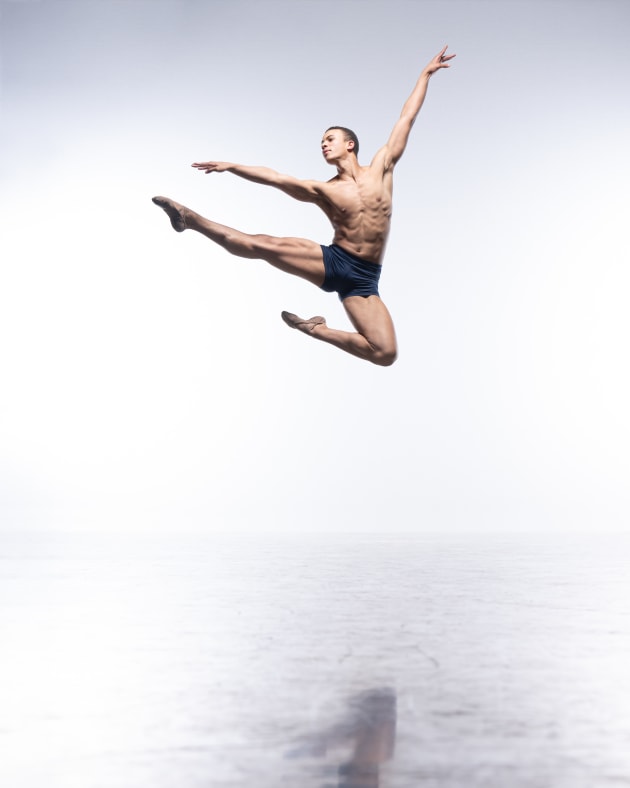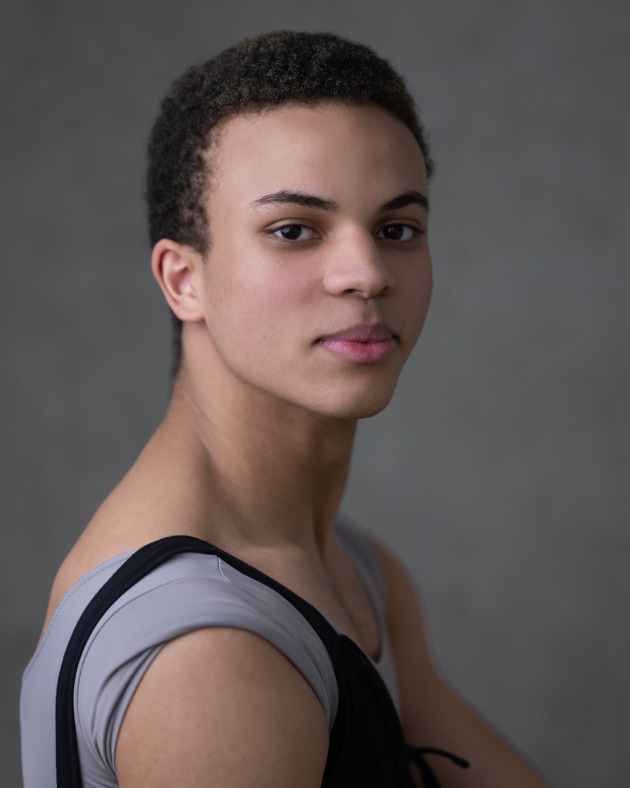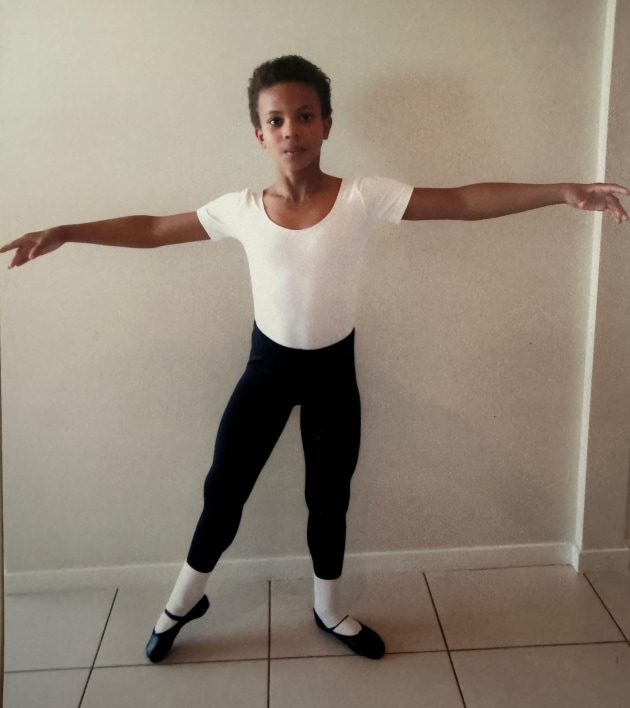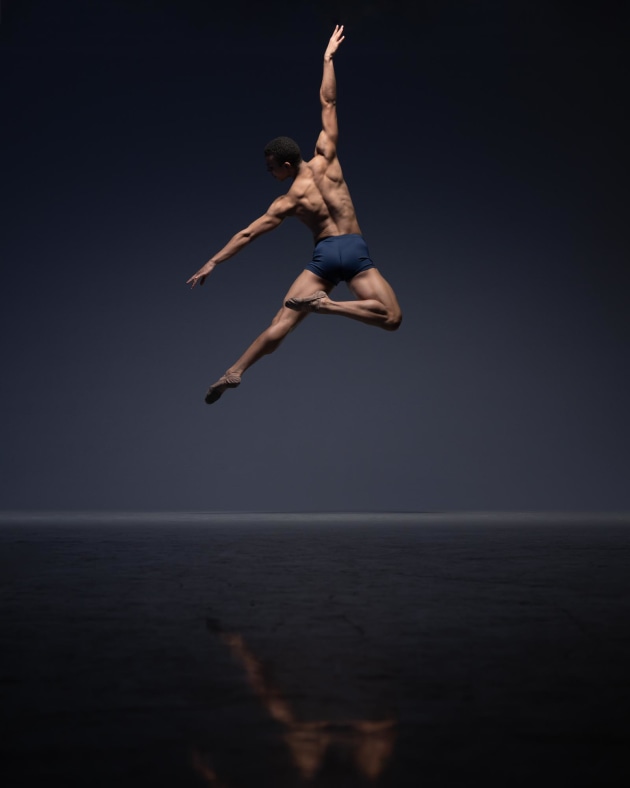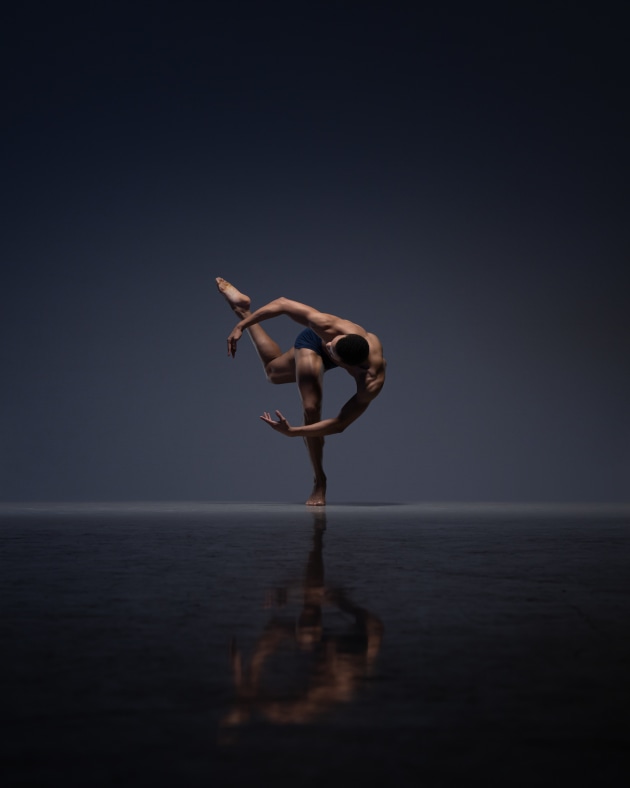After three years at ENBS, Zai Calliste is about to make his professional debut with the company he trained alongside.
When Zai Calliste moved from Queensland to London at seventeen to train at English National Ballet School (ENBS), the adjustment was significant. He had grown up in Australia but was born in the UK, a dual identity that would come to reflect his emerging voice as a dancer. “It was surreal coming back to London to train at ENBS, it was like a full circle moment to come back here and start my career.”
That career is about to begin in earnest. At just 19, Calliste has been named one of English National Ballet’s newest company members, a decision welcomed by Artistic Director Aaron S. Watkin. “I am delighted to welcome Zai to the Company and equally happy to engage a graduate from English National Ballet School. He is a talented young artist and an outstanding performer.”
Calliste began training at the age of seven, first stepping into dance at The Ann Roberts School of Dance in Townsville before continuing his studies in Brisbane at the Annette Roselli Dance Academy. His acceptance into ENBS brought him back to the UK, where he trained under Artistic Director Lynne Charles.
In 2023, he received both the Audience Choice Award and the Bronze Medal at the RAD’s Margot Fonteyn International Ballet Competition, a notable milestone early in his career. But for Calliste, the past three years have been about more than accolades. “The biggest skill I’ve learned at my time at ENBS is patience. Patience for the process, trusting the process and then patience for myself and how I've developed as a dancer.”
He speaks with particular warmth about the environment created at ENBS. “My Artistic Director, Lynne Charles — she sees me not just as a technician, but as a developing artist. That guidance has given me the freedom to grow, both as a dancer and a person.”
That kind of mentorship is central to the school’s philosophy. ENBS has just 30 places available for first-year students, allowing for individualised attention and focused development. The school’s three-year program combines both rigorous ballet training with performance experience and artistic support.
Executive Director Amanda Skoog says this structure allows the school to focus not only on technique, but also on the wellbeing and education of the whole dancer. “When we talk about training, it’s usually the body and technique that people refer to. But I think it’s more than that. We educate young people, and yes, that has to do with the body, but also the mind and the spirit.”
For many students, however, accessing elite international training requires more than talent. Tuition, travel, accommodation and living expenses in a city like London can quickly become prohibitive. ENBS is clear that fundraising is not an add-on, but a core function of the school. “We don't want to turn anybody away based on financial means,” says Skoog. “We couldn’t support talented students like Zai without it.” The school works closely with individual sponsors and philanthropic donors to ensure that once support is offered, it continues throughout a student's time at the school.
Calliste is keenly aware of the role that financial support has played in his training. “I’m incredibly grateful to my sponsors — their belief in me and their generosity have truly changed my life.”
The school’s strong relationship with English National Ballet creates direct opportunities for students. Calliste, now preparing for his first season with the company, is already rehearsing for his debut role.
As company roles become increasingly competitive, ENBS has expanded its Graduate Artists Programme (GAP) to offer additional pathways for young dancers. Historically, many students transitioned straight from school to full-time contracts. That is no longer the norm. GAP was developed in response to this shift and is designed to support recent graduates by integrating them into the company environment while maintaining a home base at the school. “The reality is, the jobs aren’t there in the way they once were,” says Skoog. “This programme helps graduates stay connected to the professional world, rehearse, perform and continue developing while preparing for auditions.”
For Calliste, the transition feels like the right next step. He is looking ahead with a sense of focus and purpose. “I’m looking forward to artistic freedom — becoming the artist I want to be, with the guidance of the company. Being able to explore where I want to take my career through the support of Aaron and ENB is something I’m really looking forward to.”
He offers a moment of humour when asked what advice he’d give his younger self.
“If I could tell my 12-year-old self anything, I would say stretch more. It will save a lot of hurt.”
The sentiment is light, but behind it is the steady commitment that has brought him to this point. Calliste is entering a new chapter — one shaped not only by talent and training, but by the systems of support that made it all possible.
This article originally appeared in the July/August/September issue of Dance Australia.
*Editor’s note: Details regarding Zai Calliste’s age and early training have been updated since the print issue. We apologise for the earlier error.



